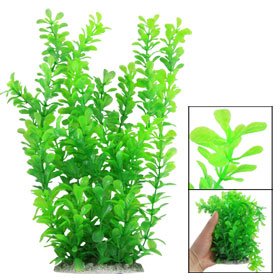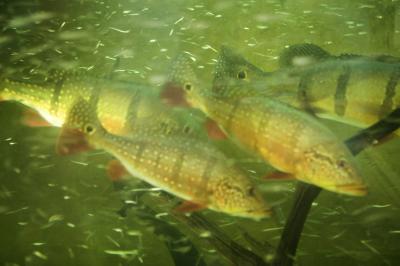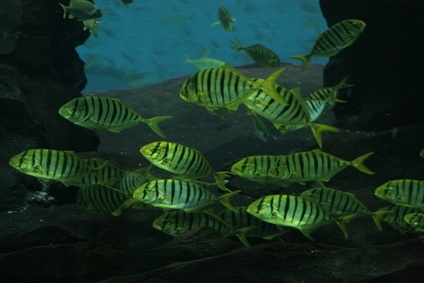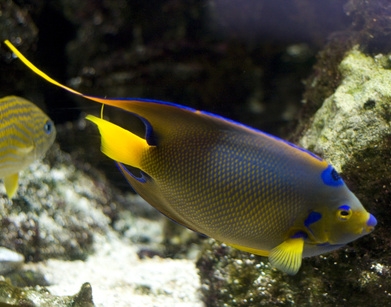If you intend to own fish it is important that you learn fish care and how to upkeep aquariums. Fish are living beings that require food, oxygen, water, attention, and a clean atmosphere. If you are not prepared to maintain fish health, water, and aquariums, you are probably better off collecting rocks. The advantage you have today is that most modern aquariums are self-sufficient. The tanks include switches and controls, which enable you to regulate lights, filters, food, dosage, and so on. In addition, today’s tanks enable you to handle a large volume of plants and fish without stressing over water conditions, and purities. Test kits are available that enable you to control the waters chemical intake. To get started we can consider a few types of fish to help you better select breeds.
Barbs are one of the largest groups of fish that offers variety in aquarium waters. The fish are typically happy-go-lucky creatures, which have colorful designs. The active fish are the easiest to feed; as well, the fish are not finicky when it comes to water conditions. Furthermore, if you are searching for breeder, this is the fish of choice. Barbs tend to grow 2 inches, 3 inches, or larger. The barbs should be separated, and grouped in communal tanks. In other words, group the smaller barbs, separating them from the larger barbs. The larger species are good-looking, yet these critters tend to rip apart aquarium goodies, such as plants. The fish have tendencies of steering up trouble in tanks; therefore, it is wise to read all available information related to the larger barbs. The fish will breed, which the fry must be fed infusoria at the start. The larger barbs can digest saltwater shrimp.
How they live
Barbs prefer to live in larger swimming areas, which are well oxygenated. If you group the barbs in smaller tanks, they will feel stressed and may cause a disturbance.
Eggs
Barbs generally lay eggs that will stick, therefore fish owners should place pebbles at the bottom of the tank, as well as a high volume of plants. Willow root and nylon are optional. Since these greedy fish will eat their own, after spawning is recommended that you remove the adult fish from the tank.
Puntius Conchonius is commonly referred to the Red Barb or Rosy Barb fish. The fish derived from India, and grow around 2 ½ inches in size. In good tank condition, the fish will light up an environment with their silver colored bodies, which produce covers of deep rosy red. At times the fish change colors to a pale greenish shade. Black tints setoff the fishes fins. This energetic fish has a calm and quiet nature. Due to his boisterousness side, you want to house him with fish his own size.
Water conditions
The Puntius tends to dwell in reasonably, or neutral alkalinity waters, as well as moderate hard waters. The water temperature should be set at 78 degrees Fahrenheit. The fish have a vigorous demand for foodstuff, since he will eat all foods given to him. If you are breeding fish for the first time, this is the choice fish. The fish will spawn around 300 layers.
Akin to the Puntius Conchonius is the Puntius Nigrofasciatus group. These fish are commonly called the Purple Head Barbs or the Black Ruby. The fish group comes from Ceylon and grows around 2 ½ inches in size. The male counterparts differ in color. The female group tends to present dark stripes in a vertical line over a yellowish-gray figure. This fish is also easy to breed and will tolerate most water conditions, as well as foods.

 Facets To Consider When Choosing A Cruise Rental
Sbiten is made at different ways, together non-alcoholic a
Facets To Consider When Choosing A Cruise Rental
Sbiten is made at different ways, together non-alcoholic a
 Aquarium Plants for Beginners
It is easy to see why so man
Aquarium Plants for Beginners
It is easy to see why so man
 Cloudy Eyes on Aquarium Fish
Cloudy Eyes on Aquarium Fish
Cloudy Ey
Cloudy Eyes on Aquarium Fish
Cloudy Eyes on Aquarium Fish
Cloudy Ey
 Freshwater & Saltwater Fish
Freshwater & Saltwater Fish
Freshw
Freshwater & Saltwater Fish
Freshwater & Saltwater Fish
Freshw
 Signs of a Sick Fish
Signs of a Sick Fish
Signs of a Sick F
Signs of a Sick Fish
Signs of a Sick Fish
Signs of a Sick F